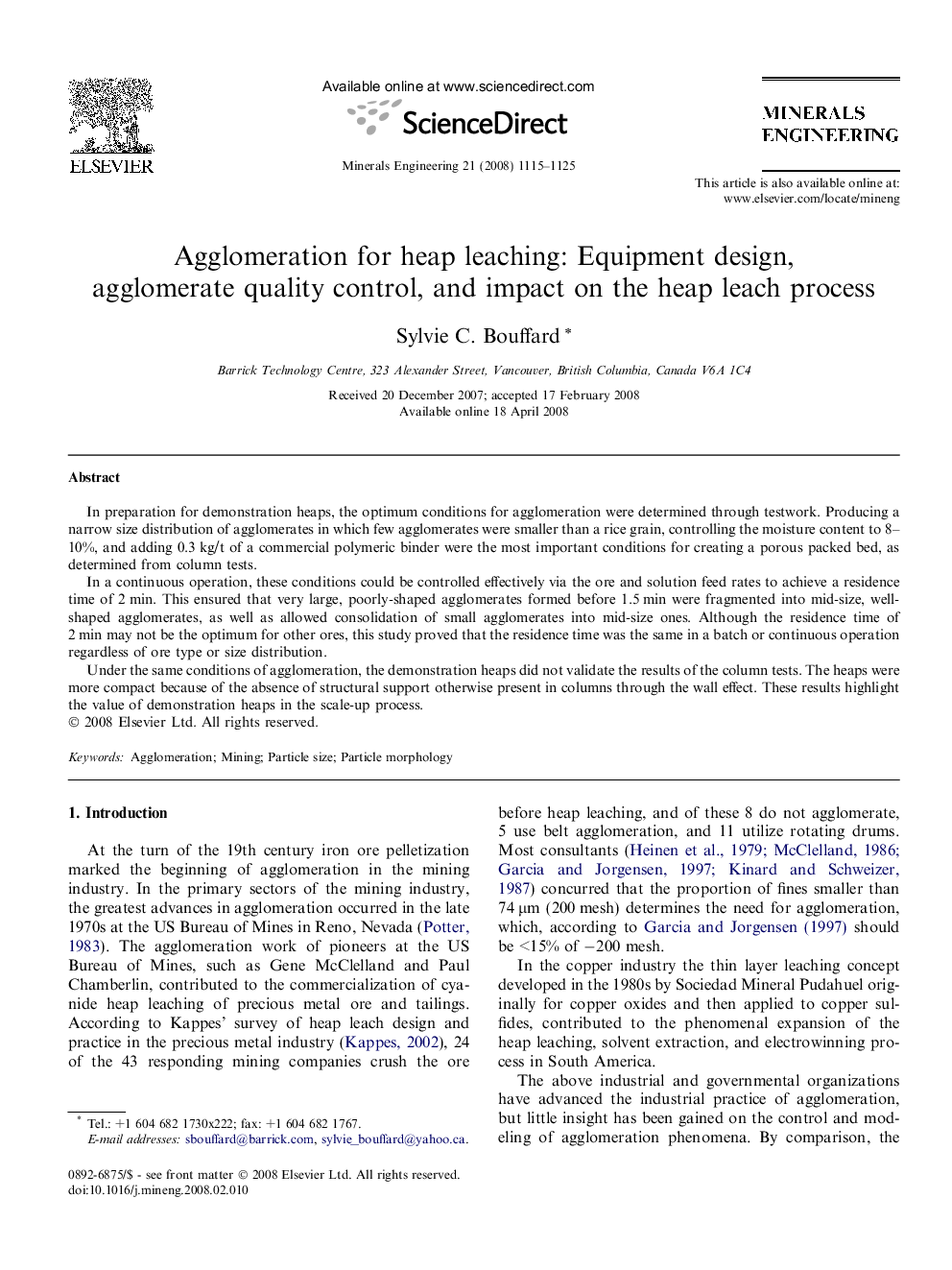| Article ID | Journal | Published Year | Pages | File Type |
|---|---|---|---|---|
| 234528 | Minerals Engineering | 2008 | 11 Pages |
In preparation for demonstration heaps, the optimum conditions for agglomeration were determined through testwork. Producing a narrow size distribution of agglomerates in which few agglomerates were smaller than a rice grain, controlling the moisture content to 8–10%, and adding 0.3 kg/t of a commercial polymeric binder were the most important conditions for creating a porous packed bed, as determined from column tests.In a continuous operation, these conditions could be controlled effectively via the ore and solution feed rates to achieve a residence time of 2 min. This ensured that very large, poorly-shaped agglomerates formed before 1.5 min were fragmented into mid-size, well-shaped agglomerates, as well as allowed consolidation of small agglomerates into mid-size ones. Although the residence time of 2 min may not be the optimum for other ores, this study proved that the residence time was the same in a batch or continuous operation regardless of ore type or size distribution.Under the same conditions of agglomeration, the demonstration heaps did not validate the results of the column tests. The heaps were more compact because of the absence of structural support otherwise present in columns through the wall effect. These results highlight the value of demonstration heaps in the scale-up process.
